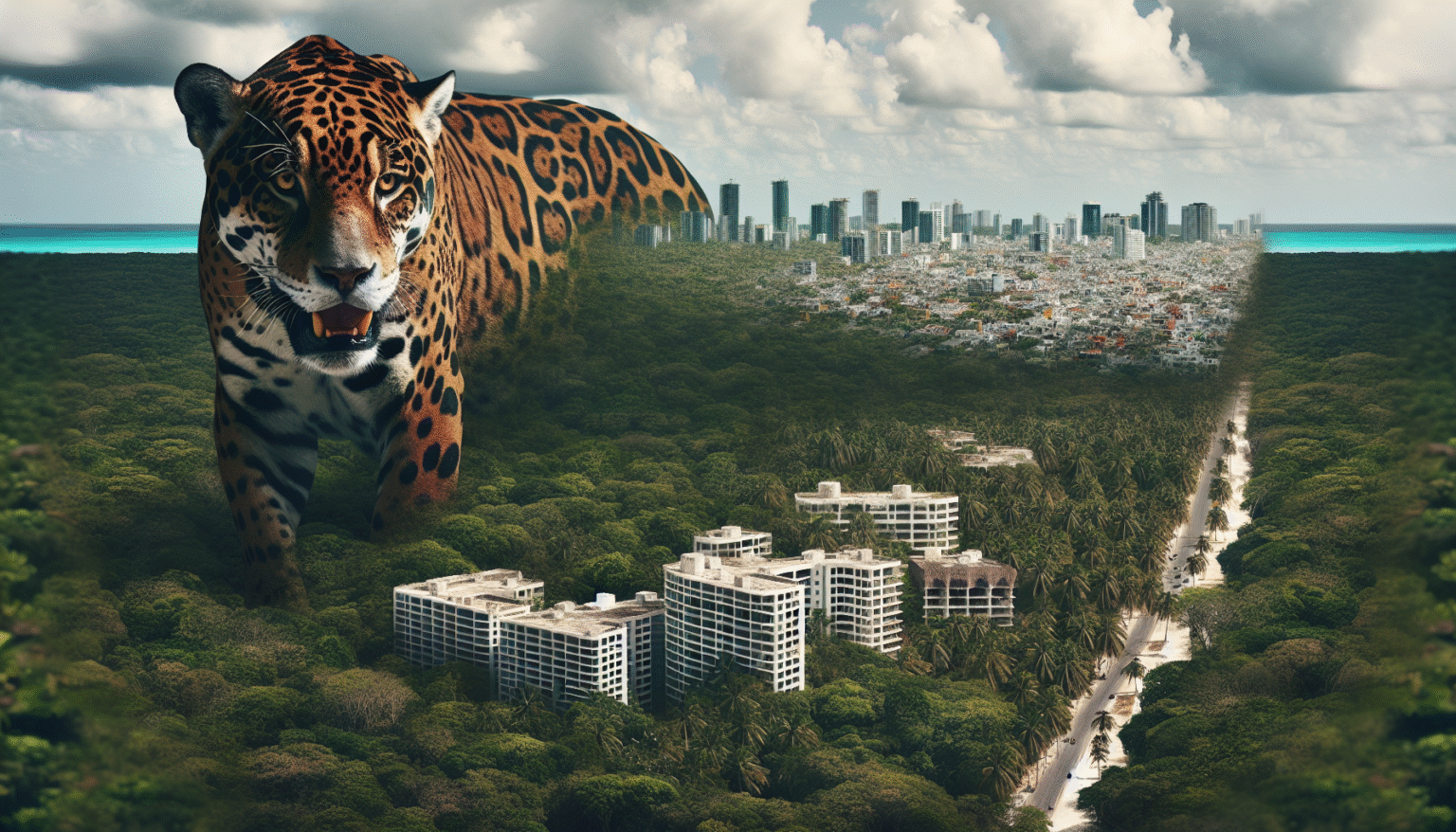Urban Expansion: A Silent Killer of Jaguars in Tulum
The Landscape of Tulum
Nestled between the Caribbean Sea and the lush jungles of the Yucatán Peninsula, Tulum has long been known for its pristine beaches, ancient Mayan ruins, and vibrant ecological diversity. However, rapid urban expansion is rapidly transforming this idyllic setting into a bustling tourist hub. Tulum’s popularity has surged in recent years, largely driven by international tourism, which has led to a significant increase in real estate development, infrastructure projects, and an influx of new residents. While this urbanization may benefit the local economy, it poses dire consequences for the rich biodiversity that once thrived in the region, particularly for the elusive jaguar (Panthera onca).
Jaguars: Symbols of Strength and Beauty
Jaguars are the largest felines in the Americas and play a crucial role in their ecosystems as apex predators. These solitary and magnificent creatures are known for their striking coat patterns, powerful build, and remarkable adaptability. The jaguar is a keystone species in tropical environments like the jungles surrounding Tulum, as it helps maintain the balance of prey populations and contributes to the overall health of the ecosystem.
Historically, jaguars roamed vast territories throughout Central and South America. However, habitat loss due to human activities has pushed them into increasingly fragmented patches of forest. In Quintana Roo, the region encompassing Tulum, jaguars require extensive territories brimming with biodiversity to thrive. Unfortunately, urban expansion is shrinking these territories and making survival increasingly precarious.
Urban Development and Habitat Loss
The rapid urbanization of Tulum has led to extensive deforestation and habitat degradation. Large areas of tropical forest are being cleared to accommodate new hotels, condominiums, and shopping centers. This land conversion not only reduces the area where jaguars can hunt and roam, but it also disrupts vital migration corridors. Fragmented habitats isolate jaguar populations and limit their genetic diversity, making it harder for these animals to survive and adapt.
Additionally, urban development introduces numerous indirect threats to jaguars. Roads and highways can create barriers that prevent the movement of wildlife, increasing the likelihood of car strikes. Urbanization also leads to increased human-wildlife conflict, as jaguars, driven by a scarcity of natural prey, may venture into human settlements in search of food. Such interactions often end tragically for both animals and humans.
The Impact of Tourism on Jaguar Populations
Tulum’s burgeoning tourism sector exacerbates the pressure on jaguars and their habitats. With tourists flocking to the area, the demand for land for hotels and recreational facilities has skyrocketed. Furthermore, the influx of visitors can disrupt wildlife behaviors. Noise pollution from construction and human activity can lead to increased stress in jaguar populations, causing them to avoid areas where they would typically hunt or rest.
Moreover, unchecked tourism can lead to the illegal poaching of jaguars and their prey. As more people arrive in Tulum, the likelihood of illicit activities such as hunting increases, further endangering already vulnerable wildlife. The increase in visitors can also drive illegal wildlife trade, targeting not only jaguars but also other species they depend upon for survival.
Conservation Efforts Under Threat
Amidst urban expansion, efforts to conserve jaguars and their habitats are also at risk. Organizations dedicated to wildlife conservation are battling to protect the few remaining forests and maintain wildlife corridors critical for jaguar populations. However, their efforts often clash with developmental interests. Limited funding and resources for conservation initiatives further complicate this scenario, making it challenging to compete with the lucrative benefits that tourism and urban development can offer.
Additionally, local awareness of the ecological significance of jaguars is still limited. Education campaigns aimed at promoting the value of biodiversity and the importance of preserving jaguar habitats are crucial in fostering a sense of responsibility among residents and tourists alike. By encouraging the local community to engage in sustainable practices and conservation efforts, the chances of safeguarding these magnificent creatures can improve.
Sustainable Development: A Possible Solution?
Adopting sustainable development practices is paramount in mitigating the effects of urban expansion on jaguar populations. Implementing eco-friendly construction regulations, promoting green spaces, and preserving natural areas can help strike a balance between growth and ecological preservation. Developers can incorporate wildlife corridors into urban planning, allowing jaguars and other species to traverse the landscape without obstruction.
Community involvement plays a pivotal role in achieving sustainability. Engaging locals in conservation projects creates a shared responsibility for preserving the unique ecosystems that surround Tulum. Incentives for sustainable tourism practices can also be established, encouraging visitors to partake in ecotourism and responsible wildlife viewing that minimizes disturbance to natural habitats.
Research and Monitoring
Ongoing research and monitoring of jaguar populations are essential in understanding their behavior and needs in a rapidly changing environment. Collaborating with universities and conservation organizations can facilitate scientific studies on jaguar ecology and habitat requirements. By collecting data on population dynamics and mapping their movements, conservationists can develop targeted strategies to protect these majestic animals.
Conclusion
In the face of urban expansion, Tulum must find a delicate balance between development and conservation. The future of the jaguar, a symbol of the resilience and beauty of the wild, hangs in the balance. Adopting sustainable practices, fostering community engagement, and elevating awareness of the ecological importance of jaguars can pave the way for a future where both urban growth and wildlife thrive together in harmony.







